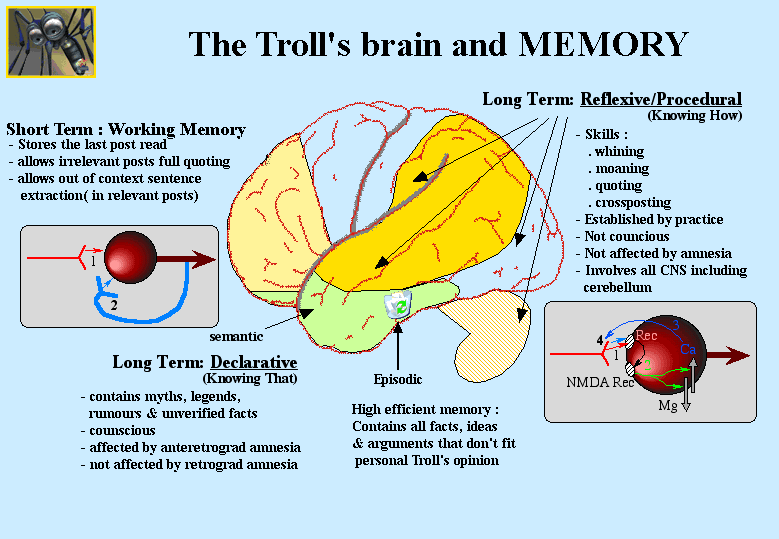
Have you ever wondered how you manage to remember information for a test? The ability to create new memories, store them for periods of time, and recall them when they are needed allows us to learn and interact with the world around us. Consider for a moment how many times a day you rely on your memory to help you function, from remembering how to use your computer to recollecting your password to log-in to your online bank account.
The study of human memory has been a subject of science and philosophy for thousands of years and has become one of the major topics of interest withincognitive psychology. But what exactly is memory? How are memories formed? The following overview offers a brief look at what memory is, how it works, and how it is organized.
What is Memory?
Memory refers to the processes that are used to acquire, store, retain, and later retrieve information. There are three major processes involved in memory: encoding, storage, and retrieval.
In order to form new memories, information must be changed into a usable form, which occurs through the process known as encoding. Once information has been successfully encoded, it must be stored in memory for later use. Much of this stored memory lies outside of our awareness most of the time, except when we actually need to use it. The retrieval process allows us to bring stored memories into conscious awareness.
The Stage Model of Memory
While several different models of memory have been proposed, the stage model of memory is often used to explain the basic structure and function of memory. Initially proposed in 1968 by Atkinson and Shiffrin, this theory outlines three separate stages of memory: sensory memory, short-term memory, and long-term memory.
- Sensory Memory
Sensory memory is the earliest stage of memory. During this stage, sensory information from the environment is stored for a very brief period of time, generally for no longer than a half-second for visual information and 3 or 4 seconds for auditory information. We attend to only certain aspects of this sensory memory, allowing some of this information to pass into the next stage – short-term memory. - Short-Term Memory
Short-term memory, also known as active memory, is the information we are currently aware of or thinking about. In Freudian psychology, this memory would be referred to as the conscious mind. Paying attention to sensory memories generates the information in short-term memory. Most of the information stored in active memory will be kept for approximately 20 to 30 seconds. While many of our short-term memories are quickly forgotten, attending to this information allows it to continue to the next stage – long-term memory. - Long-Term Memory
Long-term memory refers to the continuing storage of information. In Freudian psychology, long-term memory would be called the preconscious andunconscious. This information is largely outside of our awareness, but can be called into working memory to be used when needed. Some of this information is fairly easy to recall, while other memories are much more difficult to access.
The Organization of Memory
The ability to access and retrieve information from long-term memory allows us to actually use these memories to make decisions, interact with others, and solve problems. But how is information organized in memory? The specific way information is organized in long-term memory is not well understood, but researchers do know that these memories are arranged in groups.
Clustering is used to organize related information into groups. Information that is categorized becomes easier to remember and recall. For example, consider the following group of words:
Desk, apple, bookshelf, red, plum, table, green, pineapple, purple, chair, peach, yellow
Spend a few seconds reading them, then look away and try to recall and list these words. How did you group the words when you listed them? Most people will list using three different categories: color, furniture, and fruit.
One way of thinking about memory organization is known as the semantic network model. This model suggests that certain triggers activate associated memories. A memory of a specific place might activate memories about related things that have occurred in that location. For example, thinking about a particular campus building might trigger memories of attending classes, studying, and socializing with peers.



